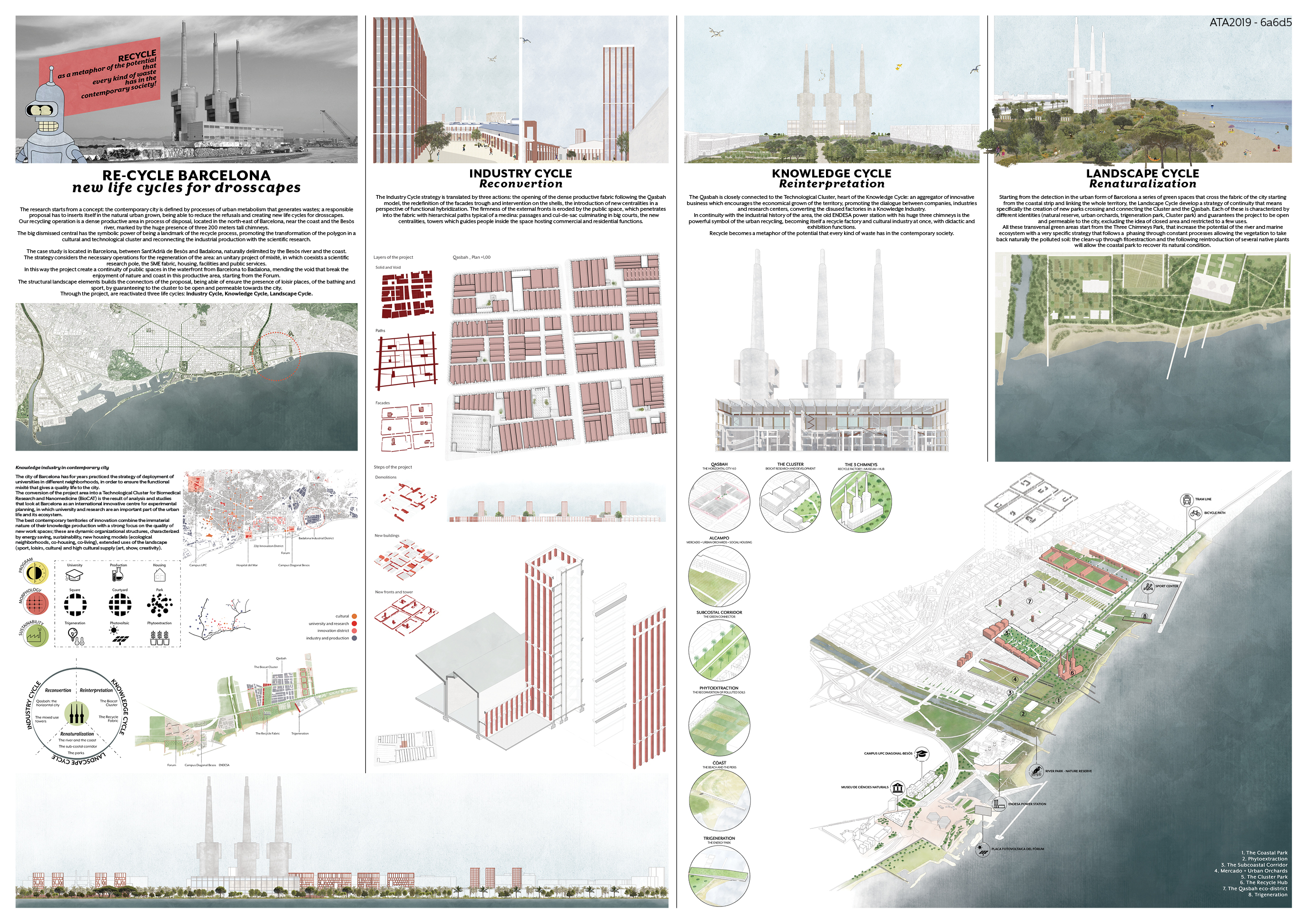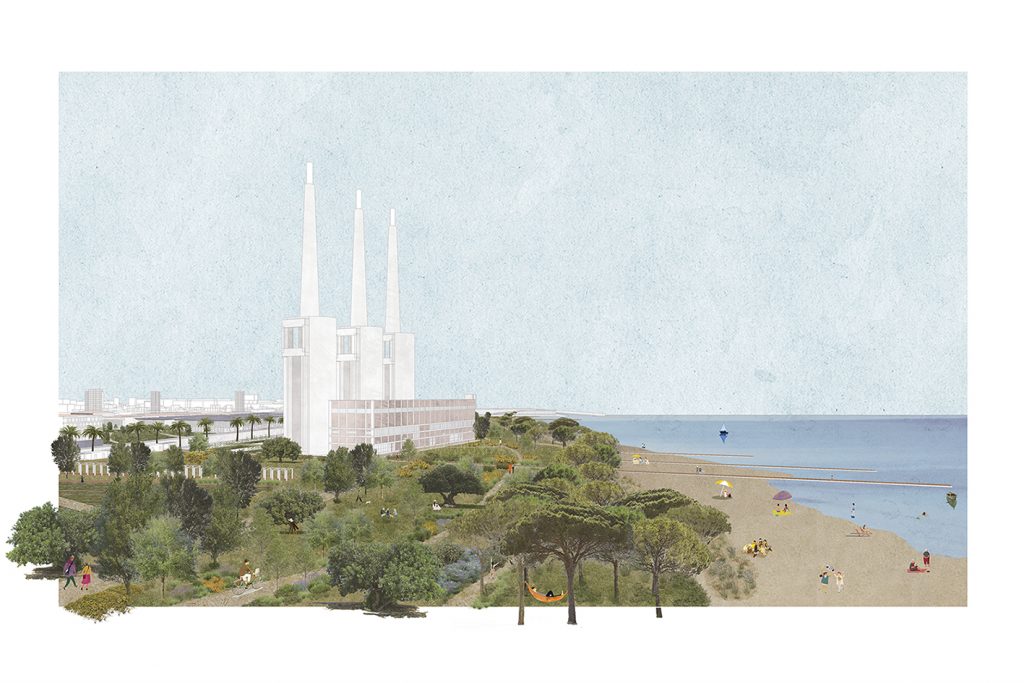The research starts from a concept: the contemporary city is defined by processes of urban metabolism that generates wastes; a responsible proposal has to inserts itself in the natural urban grown, being able to reduce the refusals and creating new life cycles for drosscapes.
Our recycling operation is a dense productive area in process of disposal, located in the north-east of Barcelona, near the coast and the Besòs river, marked by the huge presence of three 200 meters tall chimneys.
The big dismissed central has the symbolic power of being a landmark of the recycle process, promoting the transformation of the polygon in a cultural and technological cluster and reconnecting the industrial production with the scientific research.
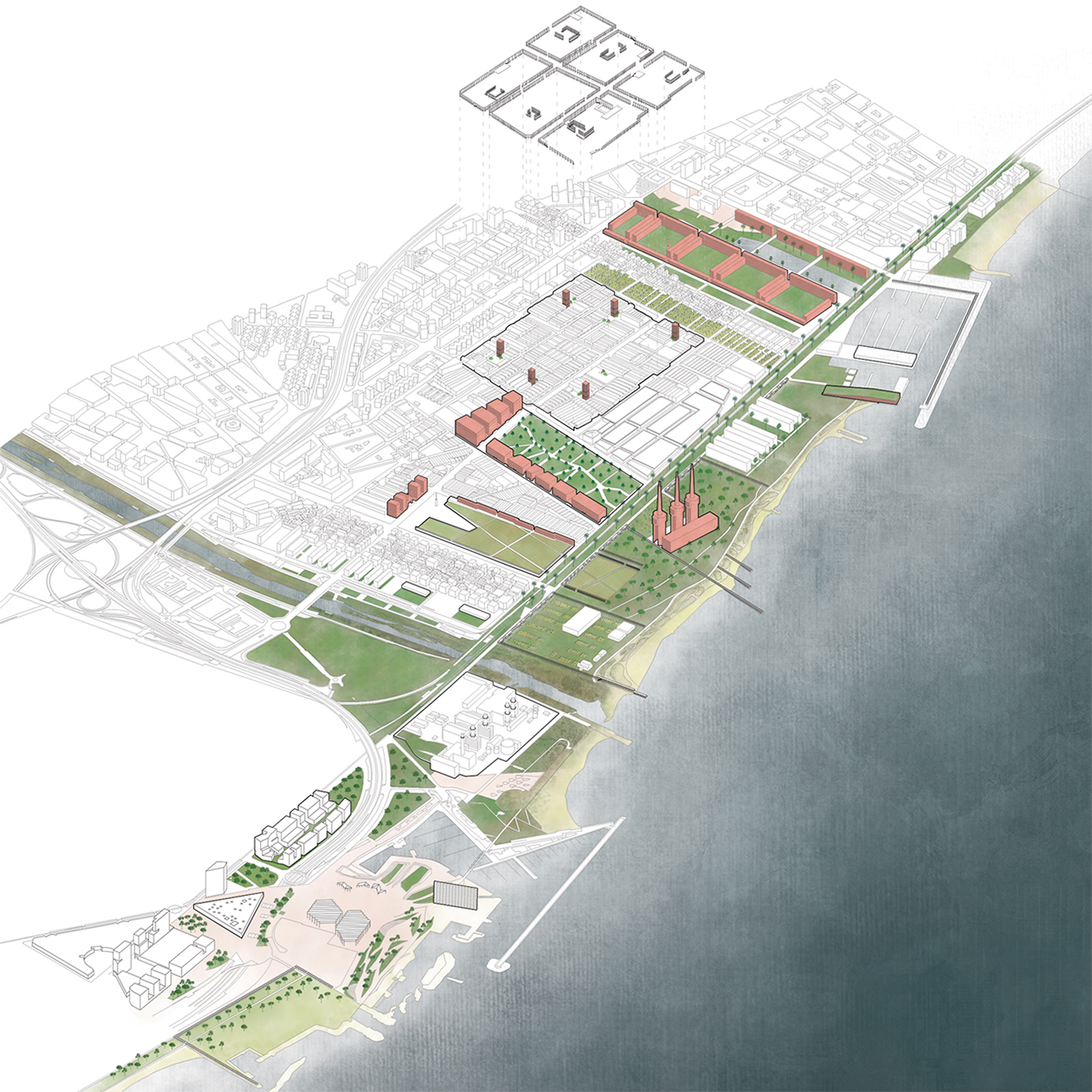
The case study is located in Barcelona, between Sant’Adrià de Besòs and Badalona, naturally delimited by the Besòs river and the coast. The strategy considers the necessary operations for the regeneration of the area: an unitary project of mixitè, in which coexists a scientific research pole, the SME fabric, housing, facilities and public services. In this way the project create a continuity of public spaces in the waterfront from Barcelona to Badalona, mending the void that break the enjoyment of nature and coast in this productive area, starting from the Forum. The structural landscape elements builds the connectors of the proposal, being able of ensure the presence of loisir places, of the bathing and sport, by guaranteeing to the cluster to be open and permeable towards the city. Through the project, are reactivated three life cycles: Industry Cycle, Knowledge Cycle, Landscape Cycle. The first one’s strategy is translated by three actions: the opening of the dense productive fabric following the Qasbah model, the redefinition of the facades trough and intervention on the shells, the introduction of new centralities in a perspective of functional hybridization. The firmness of the external fronts is eroded by the public space, which penetrates into the fabric with hierarchical paths typical of a medina: passages and cul-de-sac culminating in big courts, the new centralities, towers which guides people inside the space hosting commercial and residential functions.
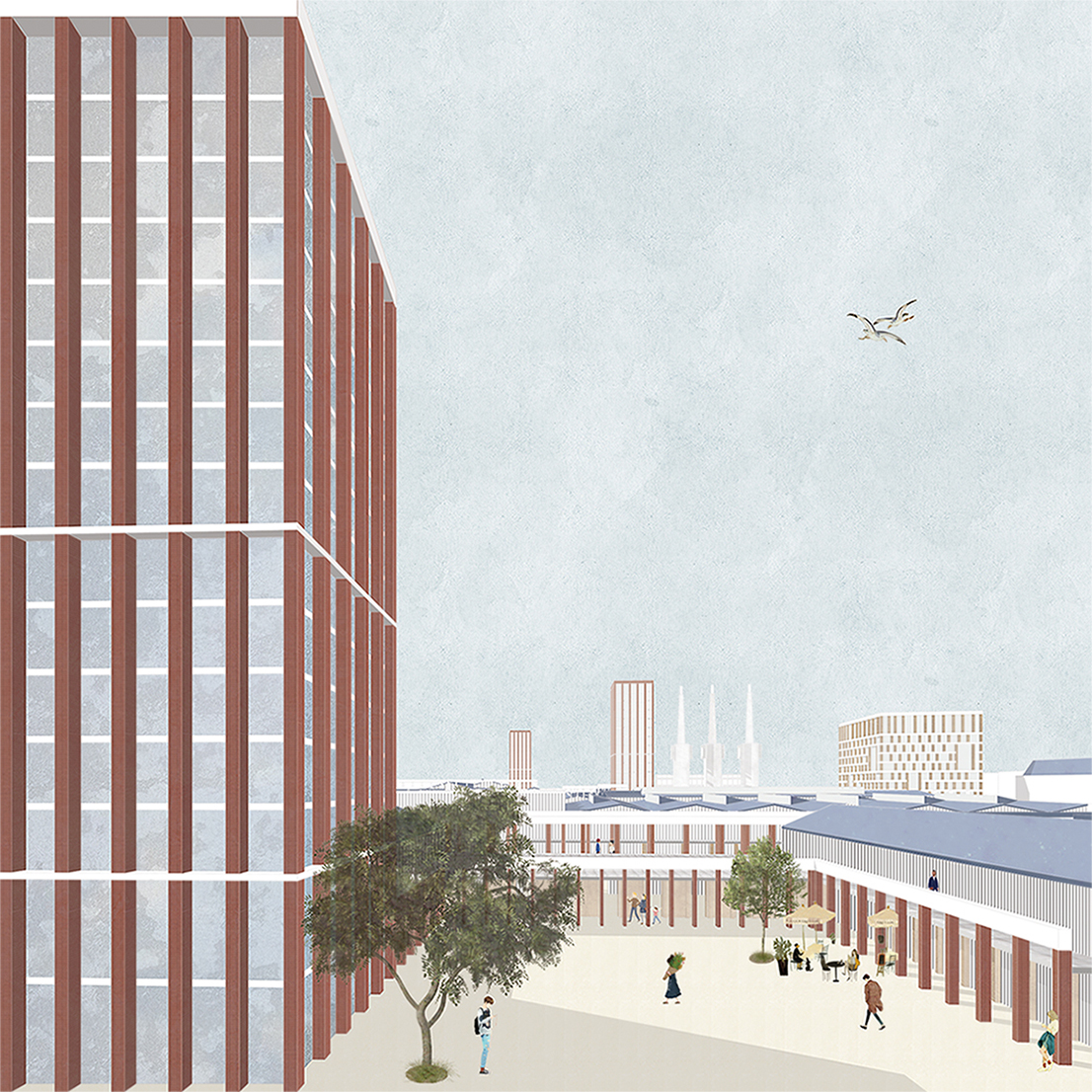
The Qasbah is closely connected to the Technological Cluster, heart of the Knowledge Cycle: an aggregator of innovative business which encourages the economical grown of the territory, promoting the dialogue between companies, industries and research centers. In continuity with the industrial history of the area, the old ENDESA power station with his huge three chimneys is the powerful symbol of the urban recycling, becoming itself a recycle factory and cultural industry at once, with didactic and exhibition functions. Starting from the detection in the urban form of Barcelona a series of green spaces that cross the fabric of the city starting from the coastal strip and linking the whole territory, the Landscape Cycle develop a strategy of continuity that means specifically the creation of new parks crossing and connecting the Cluster and the Qasbah. Each of these is characterized by different identities (natural reserve, urban orchards, trigeneration park, Cluster park) and guarantees the project to be open and permeable to the city. All these transversal green areas start from the Three Chimneys Park, that increase the potential of the river and marine ecosystem with a very specific strategy that follows a phasing through constant processes allowing the vegetation to take back naturally the polluted soil: the clean-up through fitoestraction and the following reintroduction of several native plants will allow the coastal park to recover its natural condition.
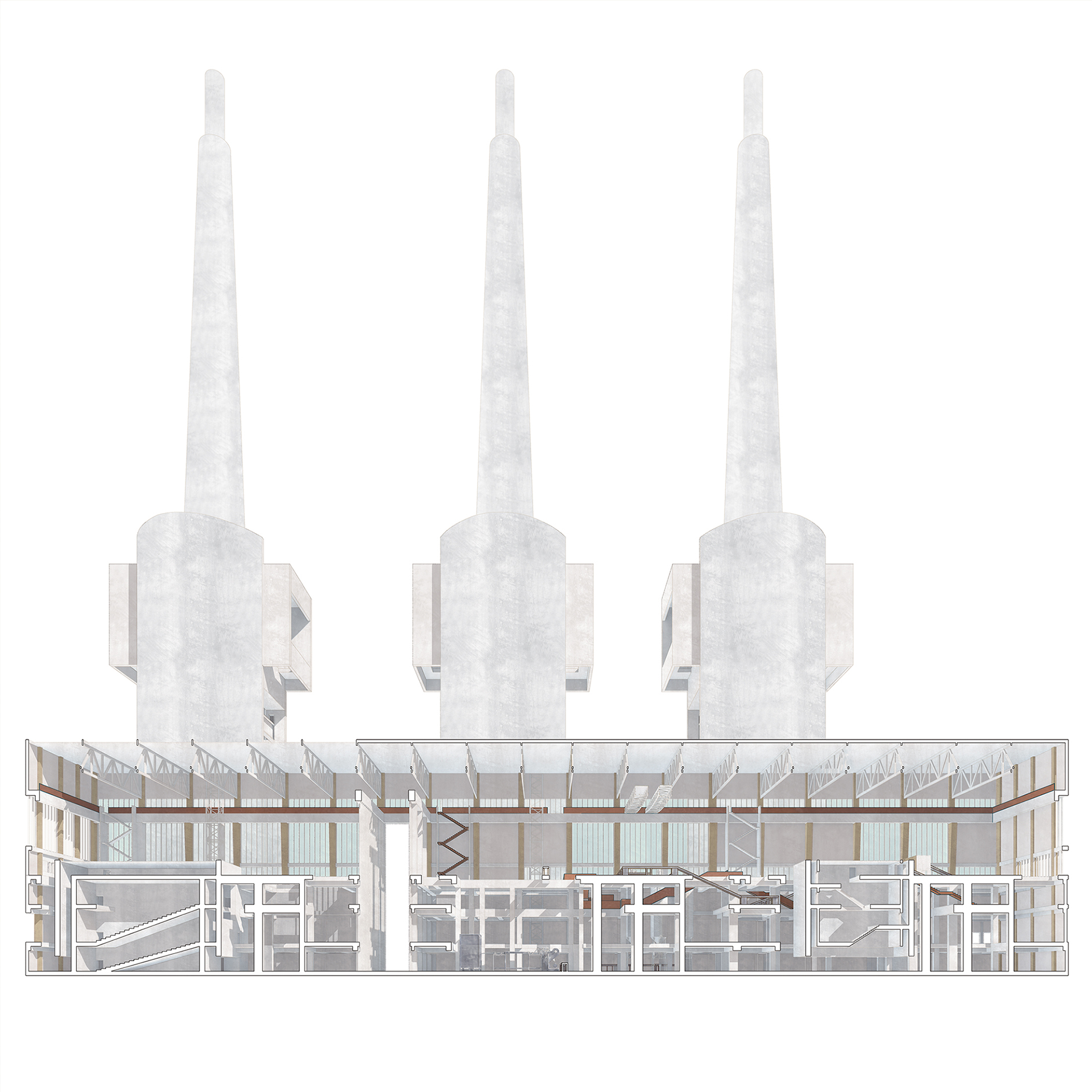
The Board:
